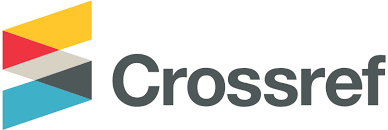Pengaruh Sifat Biji Jarak sebagai Bahan Bakar Alternatif Penganti Minyak Tanah untuk Pengeringan Tembakau Virgina Lombok
DOI:
https://doi.org/10.55681/saintekes.v3i2.320Keywords:
castor bean properties, alternative fuel, drying tobacco, Lombok VirginiaAbstract
Virginia tobacco is the largest agro-industry component in West Nusa Tenggara (NTB). The lack of subsidized kerosene quotas for tobacco extraction, even the central government decided that in 2018 the sub-oil kerosene quota will be abolished, brings its own problems. Based on this problem, research was carried out with the title how to characterize castor beans as an alternative fuel to replace kerosene as a substitute for tobacco extraction fuel with the aim of proving that castor beans can be used as an alternative fuel for drying tobacco. process without reducing the quality and economy of tobacco. This research was carried out experimentally. From the research results it can be concluded that castor bean fuel can be used as a fuel substitute for kerosene for tobacco production as proven by the results of the characteristic test, namely the calorific value produced in this research has met the national standard (SNI), namely 5288.844 cal/gr based on the standard. which meets American standards, namely 4000-6500 (Source: Hendra, 1999 in Sunyata and Wulur, 2008). economic value aspect of fuel consumption / 1 kg of dry castor beans consumes 6.7 kg of castor beans at a price of Rp. 6,700 lower than kerosene, LPG and bioethanol. Variable standard drying temperature with a drying rate of 1 m/s produces tobacco compost with the best quality color and aroma.
Downloads
References
Anonim. 2009. Petani Tembakau Lombok Mampu Antisipasi Perubahan Cuaca. Berita daerah. http:// www.beritadaerah.com
Anonim. 2009. Hutan Rusak, Mata Air di NTB Berkurang. Tempo Intraktif. http://www.tempointrktif.com
Aziz. 2006. Kandungan Kimia Jarak. Jakarta: Sibermedia.
Cahyawan, 2003. Pengering Hibrid Dengan Energi Yang Berasal Dari Surya, Ranting Kayu Bakar, Sekam Dan Minyak Tanah Untuk Tembakau. Laporan Penelitian. Mataram: Universitas Mataram.
Chakrabarti dan Johnson 1972, Thermal Analysis of Virginia Tobbacco.
Rahimy. 2006. Pembudidayaan Jarak di Indonesia. Internet
Rakhmadiono dkk. 2004. Uji Penampilan Omprongan Tembakau Virginia Dari Terpal Plastik Terhadap Mutu Krosokan, Efisiensi Energi dan Analisa Ekonomi. Internet
Pavavicharn. 2003 Feasibility of HSD for Virginia Tobacco Drying at Lombok Timur, Nusa Tenggara Barat, Indonesia. Thesis. Germany: University of Flensburg.
Sofian dan Kaliwantoro. 2004. Pengaruh Bentuk Kolektor Terhadap Laju Pengeringan pada Pengering Hibrid. Laporan Penelitian. Mataram: Universitas Mataram.
Trihusodo. 2006. Jarak Pemongkong dan Prospek Pemasarannya. Internet.
Tjokrowiasatro, E.H dan Widodo, BUK.1990. Teknik Pembakaran Dasar Dan Bahan Bakar. Surabaya: ITS.
Wahid dan Kaliwantoro. 2005. Pengaruh Laju Alran Udara Terhadap Laju Pengeringan dan Kualitas Hasil Pengeringan pada Pengering Hibrid, Laporan Penelitian. Mataram: Universitas Mataram.
Downloads
Published
How to Cite
Issue
Section
License
Copyright (c) 2024 Ahmad Multazam, Khairul Rizal

This work is licensed under a Creative Commons Attribution-ShareAlike 4.0 International License.









